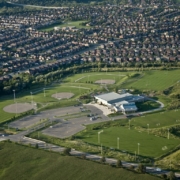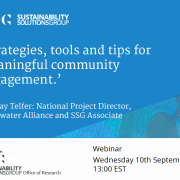How We Can Reduce Emissions by Changing How We Work
Getting to net-zero requires changes in how we work and move. In organizations where the bulk of commuting takes place by car, transportation emissions can account for a significant portion of GHG emissions. This point was underscored by the impact of COVID-19 lockdowns in early 2020: by April 2020, daily emissions had dropped 17%, partly due to a decline in car use as many stopped travelling to and from work.
In the case of the Canadian government’s operations in the national capital, commuting by its 150,000 employees is the second largest contributor to operations emissions, totalling 138 kt CO2e in 2016. Most of these emissions result from employees driving to work.
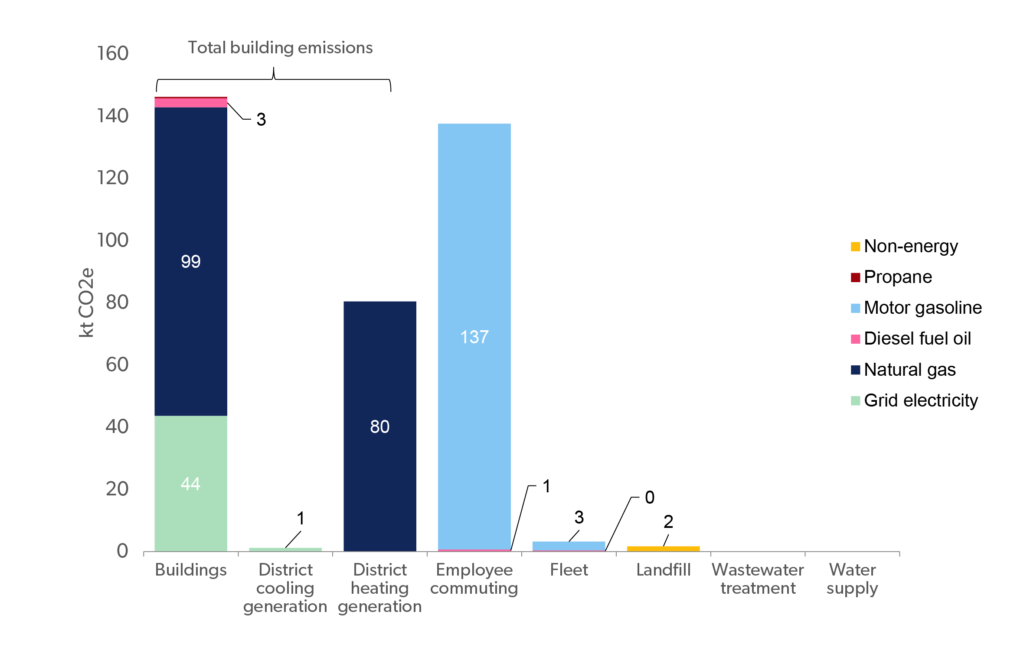 Baseline emissions for the Government of Canada’s operations in the NCR, by sector and fuel. (Designer: Naomi Devine/SSG)
Baseline emissions for the Government of Canada’s operations in the NCR, by sector and fuel. (Designer: Naomi Devine/SSG)
In a study for the Government of Canada, SSG, Rocky Mountain Institute, and whatIf? Technologies explored solutions to reduce commuting emissions in the National Capital Region (NCR) to net-zero by 2050. The project, Roadmap to Low-Carbon Operations in the National Capital Region, considered how the government could decrease commutes and make commuting less-fossil fuel intensive with public transit, cycling and walking infrastructure, and zero-emissions vehicles.
The impact could be significant. By 2050, transforming how government offices manage space and making it easy for employees to work from home could reduce emissions by 45 percent.
We found a policy enabling employees to work from home two days per week can make a significant dent in commuting emissions at little additional cost. Implementing an effective teleworking policy requires robust IT communications infrastructure to connect employees remotely. But the Government of Canada, like many organizations, already has an initiative underway to provide this infrastructure.
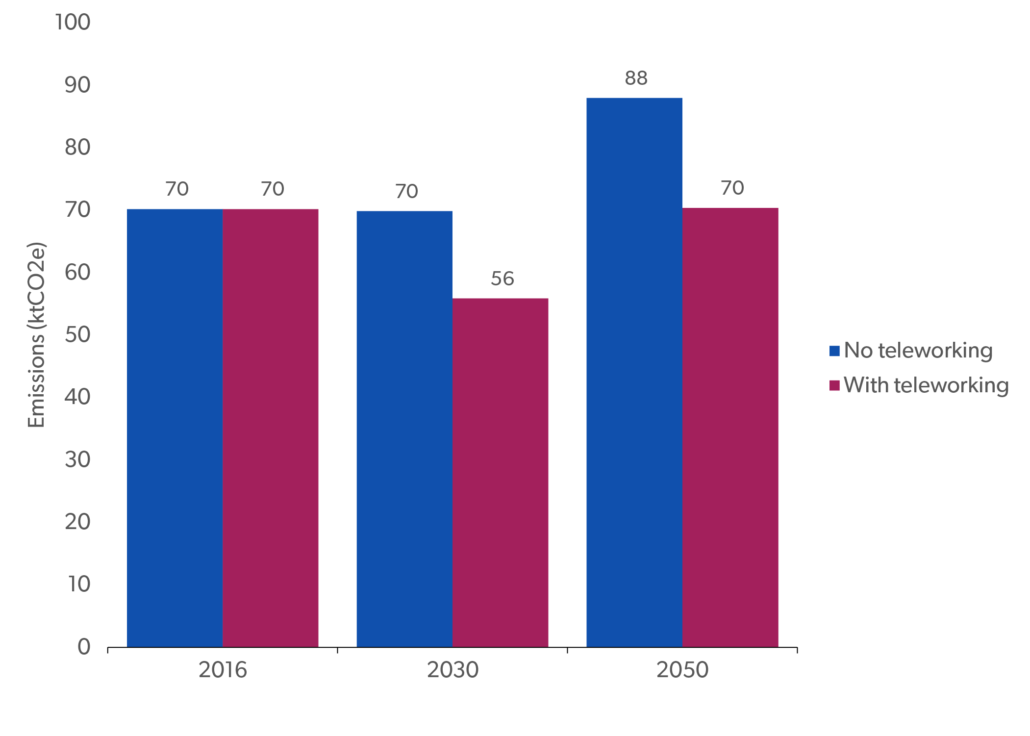 The influence of teleworking on commuting emissions tied to the Government of Canada’s operations in the National Capital Region. (Designer: Naomi Devine/SSG)
The influence of teleworking on commuting emissions tied to the Government of Canada’s operations in the National Capital Region. (Designer: Naomi Devine/SSG)
When combined with space modernization to enable employees to share desks or access co-working spaces, teleworking can reduce the floor area required by the workforce and, therefore, building emissions. At the same time, by offering employees access to co-working spaces in a variety of locations, the government can help reduce long-distance travel by enabling employees to work closer to where they live.
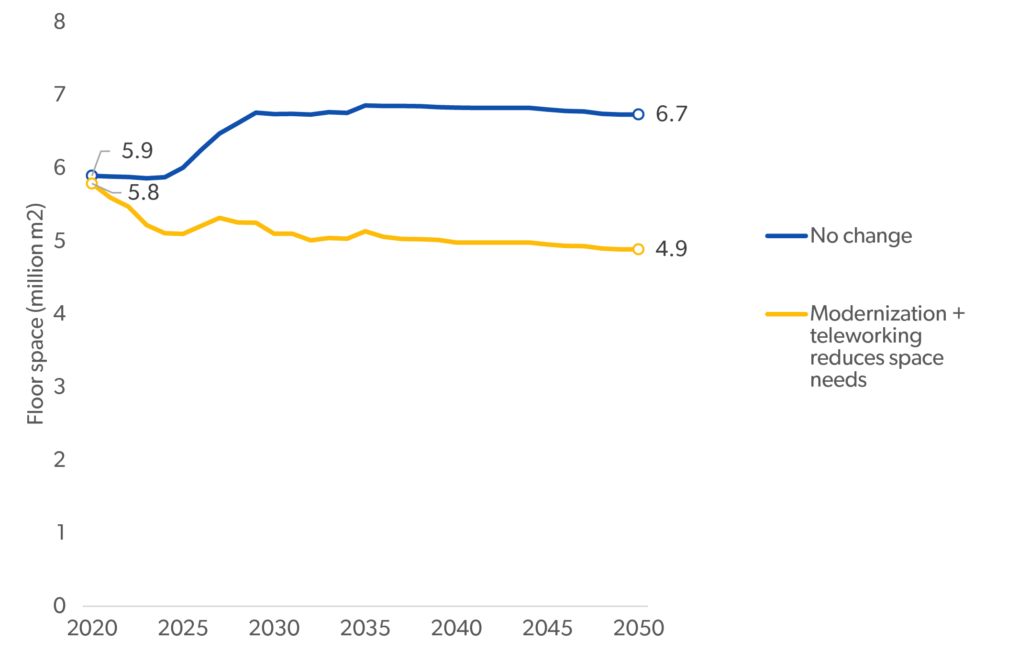 Possible future space needs for the Government of Canada’s operations in the NCR after modernization and teleworking, including a 12% buffer for the minimum required floor space. (Designer: Naomi Devine/SSG)
Possible future space needs for the Government of Canada’s operations in the NCR after modernization and teleworking, including a 12% buffer for the minimum required floor space. (Designer: Naomi Devine/SSG)
The number of employees who drive to work is influenced by the location of offices. For example, in comparison to a single-use campus in Kanata, an Ottawa suburb, a federal building in downtown Ottawa has higher rates of transit, walking, and cycling commuting.
The Roadmap recommends the government locate new developments in areas with good transit, walking, and cycling access or design multi-use, transit-based developments where employees and residents live, work, eat, and access services and recreation within their immediate neighborhood.
Of course, even with all these changes, some employees would have to drive. Parking incentives, such as eliminating all free-parking except for zero-emissions vehicles, as well as promoting carpooling could help drive those emissions down.
Changes to working life during the pandemic have demonstrated that the transformations recommended in the Roadmap are viable. As organizations look to bring employees back to the office or redevelop or create new office space, transforming the way employees use space and offering them the flexibility to work from home can push down workplace emissions.
For more insights on how to build a carbon-free future, sign up for the monthly SSG Newswire and updates from the Rocky Mountain Institute’s Carbon-Free Buildings Team.
_
Yuill Herbert is a co-founder and principal of the Sustainability Solutions Group, a climate planning consultancy that has designed climate action plans and community energy and emissions plans for more than 60 municipalities, encompassing over 30% of the Canadian population. He led the development of the Roadmap for Low-Carbon Operations in the National Capital Region.
Erik Frenette has worked on energy models since 2011, with a focus on providing solutions to Canadian specific energy and climate change issues. He is a model analyst at whatIf? Technologies.




